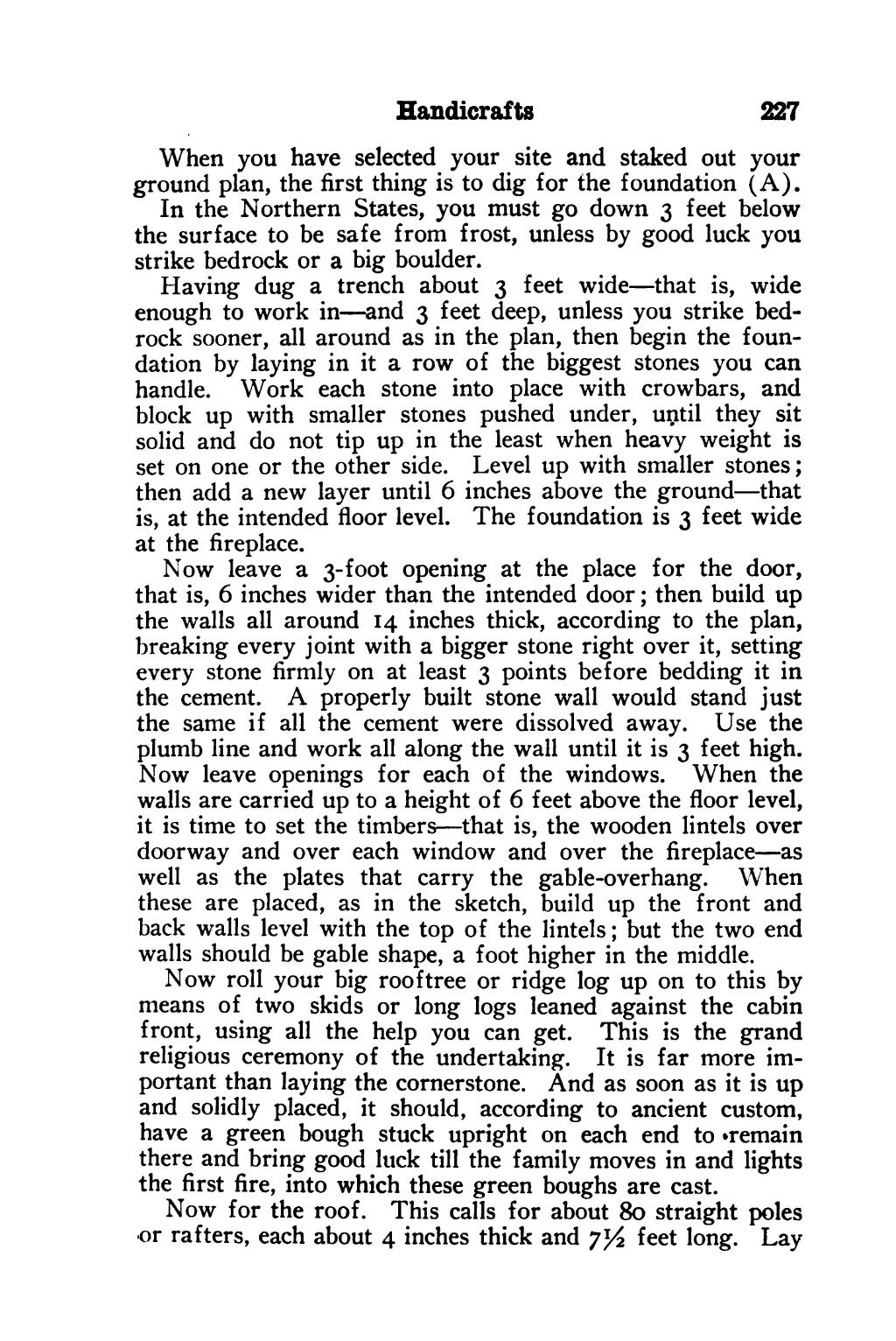Handicrafts 227 When you have selected your site and staked out your ground plan, the first thing is to dig for the foundation (A). In the Northern States, you must go down 3 feet below the surface to be safe from frost, unless by good luck you strike bedrock or a big boulder. Having dug a trench about 3 feet wide—that is, wide enough to work in—and 3 feet deep, unless you strike bed- rock sooner, all around as in the plan, then begin the foun- dation by laying in it a row of the biggest stones you can handle. Work each stone into place with crowbars, and block up with smaller stones pushed under, until they sit solid and do not tip up in the least when heavy weight is set on one or the other side. Level up with smaller stones ; then add a new layer until 6 inches above the ground—that is, at the intended floor level. The foundation is 3 feet wide at the fireplace. Now leave a 3-foot opening at the place for the door, that is, 6 inches wider than the intended door; then build up the walls all around 14 inches thick, according to the plan, breaking every joint with a bigger stone right over it, setting every stone firmly on at least 3 points before bedding it in the cement. A properly built stone wall would stand just the same if all the cement were dissolved away. Use the plumb line and work all along the wall until it is 3 feet high. Now leave openings for each of the windows. When the walls are carried up to a height of 6 feet above the floor level, it is time to set the timbers—that is, the wooden lintels over doorway and over each window and over the fireplace—as well as the plates that carry the gable-overhang. When these are placed, as in the sketch, build up the front and back walls level with the top of the lintels; but the two end walls should be gable shape, a foot higher in the middle. Now roll your big rooftree or ridge log up on to this by means of two skids or long logs leaned against the cabin front, using all the help you can get. This is the grand religious ceremony of the undertaking. It is far more im- portant than laying the cornerstone. And as soon as it is up and solidly placed, it should, according to ancient custom, have a green bough stuck upright on each end to »remain there and bring good luck till the family moves in and lights the first fire, into which these green boughs are cast. Now for the roof. This calls for about 80 straight poles or rafters, each about 4 inches thick and 7% feet long. Lay
Stránka:roll 1931.djvu/243
Z thewoodcraft.org
Tato stránka nebyla zkontrolována
